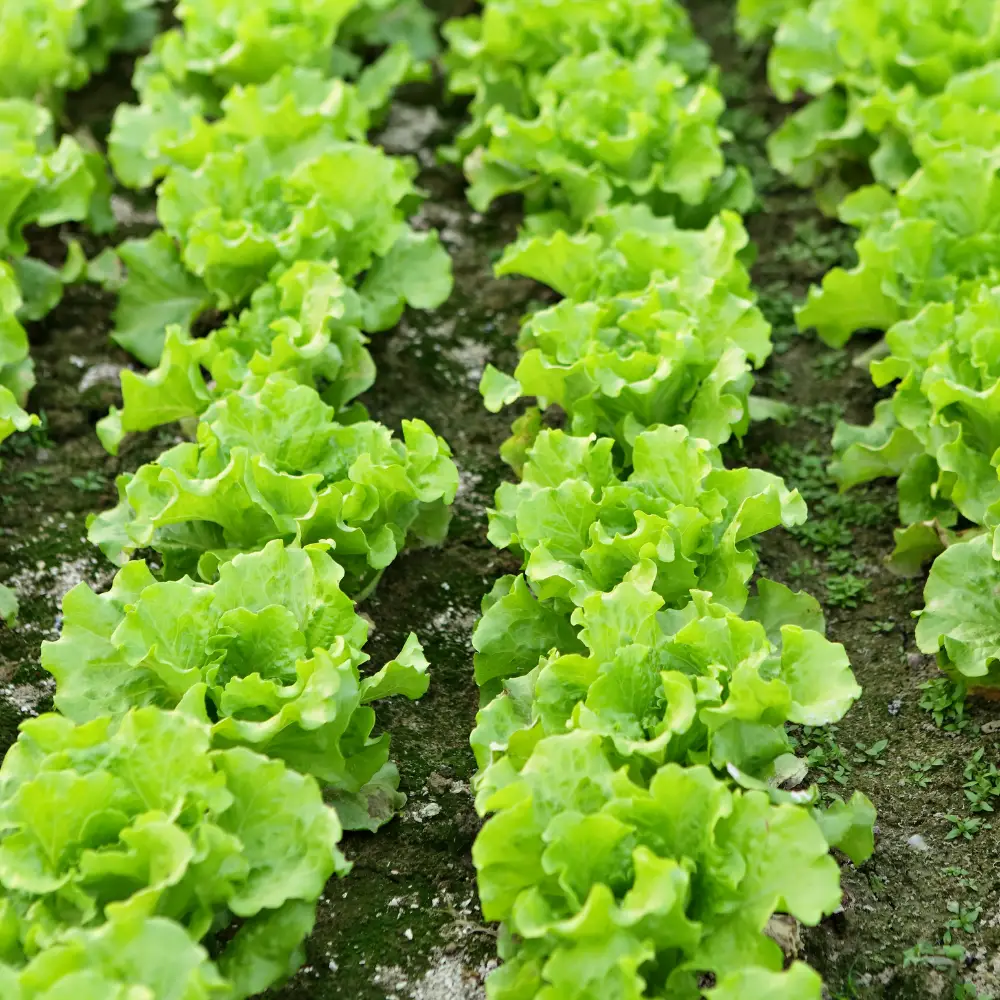So, you’ve decided to try your hand at growing Black Seeded Simpson Lettuce, but you’re not quite sure where to begin. Well, fret not, because in this ultimate guide, we’re going to cover everything you need to know to successfully grow this popular variety of lettuce. From planting to harvest, we’ll walk you through each step, providing helpful tips and tricks along the way. Whether you’re a seasoned gardener or a beginner with a green thumb, this guide will ensure that your Black Seeded Simpson Lettuce thrives and becomes a delicious addition to your garden. Let’s get started!
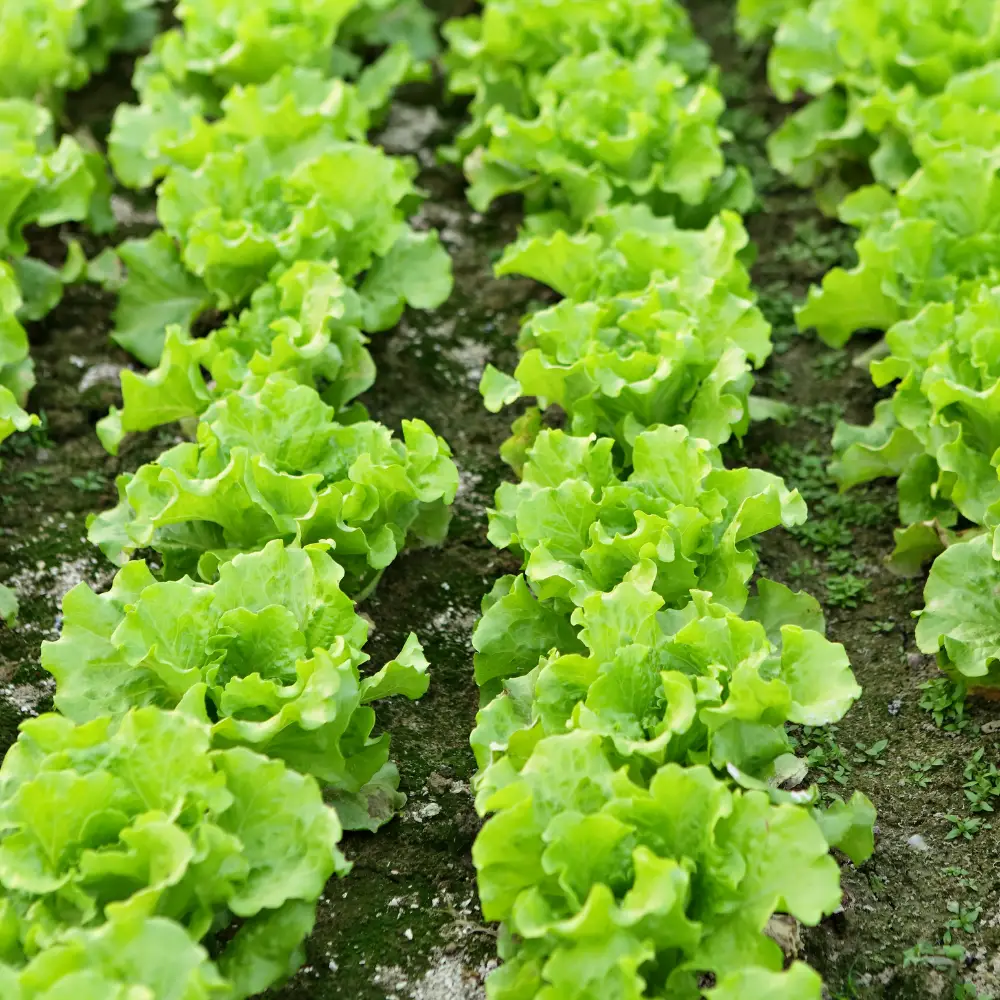
Choosing the Right Variety of Black Seeded Simpson Lettuce
Consider Climate and Season
When choosing the right variety of Black Seeded Simpson Lettuce, it’s important to consider the climate and the season in which you will be growing it. This particular lettuce variety thrives in cool weather, so it’s best to plant it in the spring or fall when temperatures are mild. If you live in a region with a warmer climate, you can still grow Black Seeded Simpson Lettuce, but you may need to provide some extra shade to protect it from excessive heat.
Selection of Seeds
When selecting seeds for Black Seeded Simpson Lettuce, it’s important to choose high-quality seeds from a reputable source. Look for seeds that are labeled as organic or non-GMO to ensure that you are starting with the best possible foundation for your lettuce crop. It’s also a good idea to choose seeds that are specifically bred for your climate, as this will increase the chances of success in growing healthy and productive lettuce plants.
Planting Black Seeded Simpson Lettuce
Preparing the Soil
Before planting Black Seeded Simpson Lettuce, you’ll need to prepare the soil to create the optimal growing conditions for your plants. Start by removing any weeds or debris from the area where you plan to plant. Loosen the soil with a garden fork or tiller to improve drainage and aeration. You can also incorporate organic matter, such as compost or well-rotted manure, into the soil to increase its fertility.
Sowing the Seeds
To sow the Black Seeded Simpson Lettuce seeds, create shallow furrows in the prepared soil. The furrows should be about ½ inch deep and spaced 12 to 18 inches apart. Gently sprinkle the seeds along the furrows, aiming for a spacing of about 2 inches between each seed. Cover the seeds with a thin layer of soil and lightly pat it down to ensure good seed-to-soil contact.
Transplanting Seedlings
If you prefer not to sow the seeds directly in the garden, you can also start Black Seeded Simpson Lettuce seedlings indoors and then transplant them outdoors once they have grown a few inches tall. To do this, start the seeds in small pots or trays filled with seed starting mix. Keep the soil moist and provide sufficient light. Once the seedlings have developed a strong root system and have a few true leaves, they are ready to be transplanted outdoors. Choose a cloudy day or transplant in the evening to minimize stress on the seedlings.
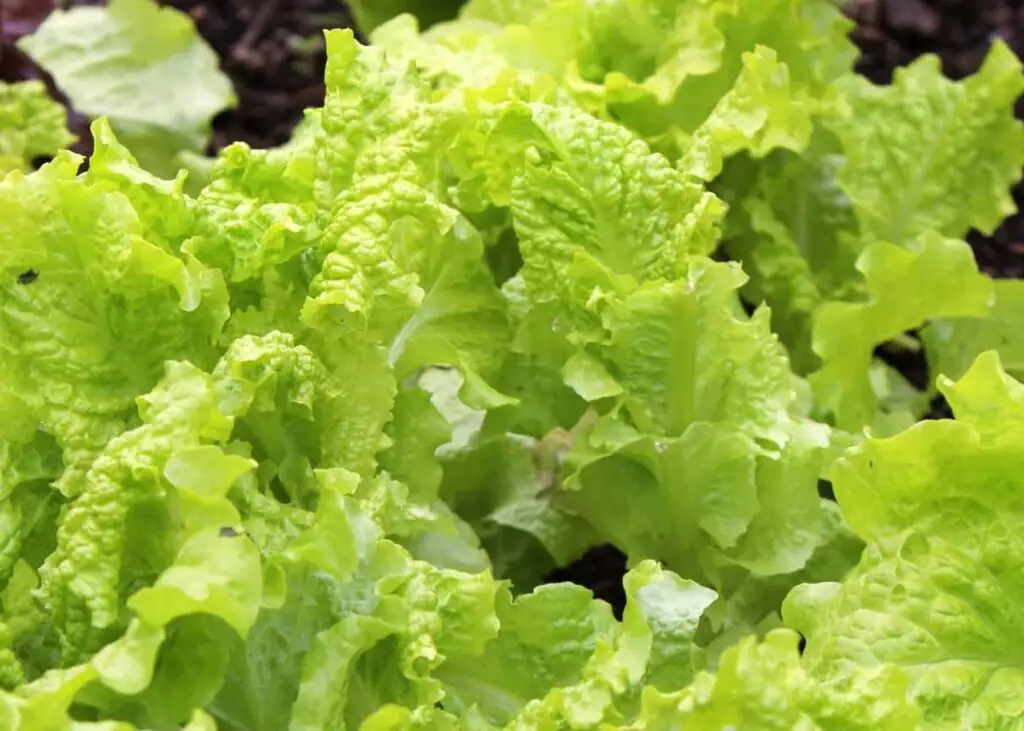
Watering and Irrigation
Watering Schedule
Proper watering is essential to the success of your Black Seeded Simpson Lettuce crop. The soil should be consistently moist, but not waterlogged. Keep an eye on the weather conditions and adjust your watering schedule accordingly. In general, lettuce plants need about 1 inch of water per week. However, during periods of hot weather, you may need to increase the frequency of watering to prevent the soil from drying out.
Proper Irrigation Techniques
When watering Black Seeded Simpson Lettuce, it’s best to use a drip irrigation system or a soaker hose. These methods deliver water directly to the base of the plants, minimizing water waste and reducing the chances of the foliage getting wet. Wet foliage can lead to the development of fungal diseases. If you don’t have access to drip irrigation or a soaker hose, you can also water with a watering can or hose, just be sure to water at the base of the plants and avoid getting the foliage wet.
Providing Adequate Sunlight
Ideal Sunlight Conditions
Black Seeded Simpson Lettuce requires adequate sunlight to grow and develop properly. Ideally, it should receive at least 6 hours of direct sunlight per day. However, if you live in a region with intense summer heat, it’s a good idea to provide some shade for the lettuce plants during the hottest part of the day. This can be achieved by using shade cloth or by planting taller crops nearby to provide natural shade.
Protecting from Excessive Heat
Excessive heat can cause Black Seeded Simpson Lettuce to bolt, which means it will start producing flowers and go to seed prematurely, resulting in bitter and tough leaves. To protect your lettuce plants from excessive heat, you can use shading techniques, as mentioned earlier. Additionally, mulching around the plants can help keep the soil cool and retain moisture, which can mitigate the effects of high temperatures.
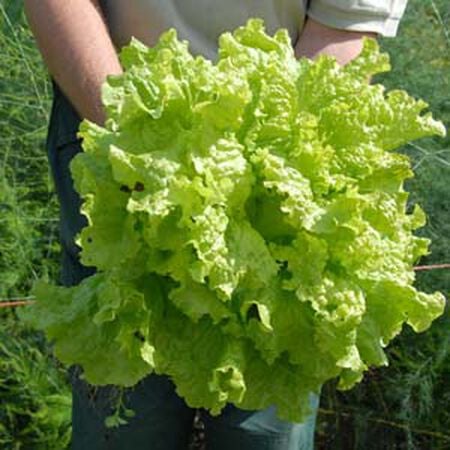
Soil Fertilization and Nutrient Requirements
Fertilizer Selection
To ensure that your Black Seeded Simpson Lettuce plants get the necessary nutrients, it’s important to fertilize the soil appropriately. Before planting, incorporate a balanced organic fertilizer into the soil according to the package instructions. Alternatively, you can use compost or well-rotted manure to provide the necessary nutrients. As the lettuce plants grow, you can supplement with a liquid organic fertilizer every few weeks to support their growth and productivity.
Application Schedule
When applying fertilizer to Black Seeded Simpson Lettuce, it’s important to follow the recommended application schedule. Generally, it’s best to apply fertilizer when the plants are actively growing and have a good root system established. This is usually after the seedlings have reached a height of about 2 inches. Avoid overfertilizing, as this can lead to excessive leaf growth and a decreased yield of edible leaves.
Weed Control in Black Seeded Simpson Lettuce
Mulching
Mulching is an effective way to control weeds in your Black Seeded Simpson Lettuce bed. Apply a layer of organic mulch, such as straw or wood chips, around the plants to suppress weed growth. Mulch also helps to retain moisture in the soil and regulate soil temperature. Make sure to keep the mulch a few inches away from the base of the lettuce plants to prevent excessive moisture and potential rotting of the stems.
Hand Weeding
Regular hand weeding is another important component of weed control in Black Seeded Simpson Lettuce. Take the time to inspect your lettuce bed regularly and remove any weeds that have emerged. Be gentle while weeding to avoid damaging the lettuce plants. Weeding is best done when the soil is moist, as it makes it easier to remove the entire weed, including its roots.
Herbicide Use
While organic and manual weed control methods are generally recommended, there may be instances where herbicide use becomes necessary. If you choose to use herbicides, it’s important to select a product that is labeled for use on vegetables and follow the instructions carefully. Be cautious when applying herbicides near your lettuce plants to prevent any accidental contact or drift that could harm them.
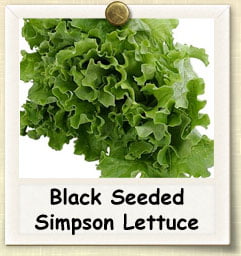
Pest Control Measures
Identification of Common Pests
To effectively control pests in your Black Seeded Simpson Lettuce, it’s important to be able to identify and understand the behavior of common pests. Aphids, slugs, snails, and caterpillars are some of the common pests that can affect lettuce plants. Aphids are small, soft-bodied insects that suck sap from the leaves, causing distortion and yellowing. Slugs and snails leave slime trails and feed on the leaves, while caterpillars can eat large sections of the foliage.
Organic Pest Control Methods
When it comes to pest control in Black Seeded Simpson Lettuce, organic methods are often the preferred choice. Introduce beneficial insects, such as ladybugs and lacewings, which feed on aphids and other pests. Use row covers or netting to protect the lettuce plants from caterpillars. Handpicking pests can also be effective for small infestations. Additionally, you can create a homemade pest deterrent spray by combining water, soap, and garlic, which can help repel pests from the lettuce plants.
Chemical Control Methods
If organic pest control methods are not providing the desired results, you may choose to use chemical control methods as a last resort. However, it’s important to use these products responsibly and follow the instructions on the label carefully. Select a pesticide that is specifically labeled for the pests you are targeting, and avoid spraying when the lettuce plants are in direct sunlight or during windy conditions. Always adhere to the recommended waiting period between pesticide application and harvest.
Harvesting Black Seeded Simpson Lettuce
Determining the Right Time for Harvest
The right time to harvest Black Seeded Simpson Lettuce is when the leaves are tender, yet firm, and have reached a size that is desirable for consumption. The outer leaves can be harvested individually, allowing the inner leaves to continue growing and ensuring a continuous harvest throughout the season. You can also choose to harvest the entire head of lettuce at once if you prefer a more traditional approach.
Harvesting Techniques
To harvest Black Seeded Simpson Lettuce, simply grab a leaf near the base of the plant and gently pull it away from the stem. Use a sharp knife or pair of scissors to cut the leaves if they are difficult to remove by hand. Be sure to handle the lettuce leaves with care to avoid bruising or damaging them. Once harvested, immediately rinse the lettuce leaves with cool water to remove any dirt or debris.
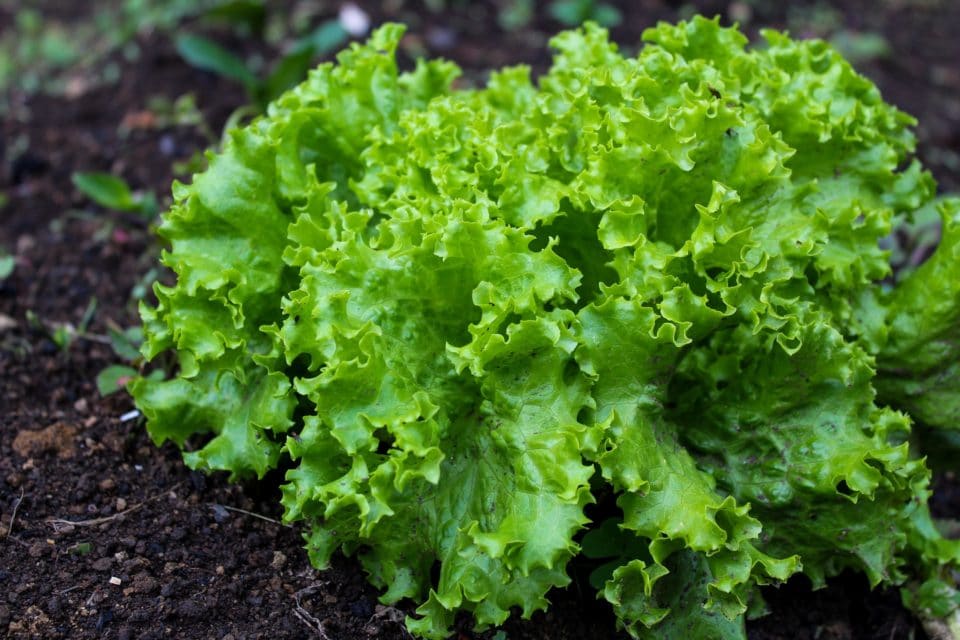
Post-Harvest Care
Proper Storage
After harvesting Black Seeded Simpson Lettuce, it’s important to store it properly to maintain its freshness and quality. Start by gently drying the leaves with a clean towel or a salad spinner to remove excess moisture. Then, wrap the lettuce in a slightly damp paper towel and place it in a plastic bag or airtight container. Store the lettuce in the refrigerator at a temperature of around 32°F to 40°F (0°C to 4°C) to extend its shelf life.
Extending Shelf Life
To further extend the shelf life of Black Seeded Simpson Lettuce, you can also try a few additional techniques. For example, storing the lettuce with a small piece of celery can help prevent wilting. Another method is to trim the stem ends of the lettuce leaves and place them in a container of water, similar to how you would store fresh flowers. This can help keep the leaves hydrated and crisp for a longer period.
Common Problems and Solutions
Bolting
Bolting is a common problem with Black Seeded Simpson Lettuce, especially when exposed to high temperatures. To prevent bolting, choose a location with partial shade or use shading techniques to protect the lettuce plants from excessive heat. Harvest the lettuce promptly when it reaches maturity to minimize the chances of premature bolting. If bolting does occur, remove the affected plants and consider reseeding in a more suitable season.
Disease Prevention
Black Seeded Simpson Lettuce can be susceptible to various diseases, such as powdery mildew and downy mildew. To prevent disease, avoid overhead watering, as this can create a humid environment ideal for disease development. Proper plant spacing and good air circulation can also help reduce the chances of disease. If you notice any signs of disease, such as discolored or distorted leaves, promptly remove and dispose of the affected plant parts.
Dealing with Aphids
Aphids can be a common pest in Black Seeded Simpson Lettuce. To deal with aphids, try spraying the plants with a strong stream of water to dislodge them. Alternatively, you can make a homemade spray with water and a few drops of dish soap to effectively control aphid populations. If the infestation becomes severe, consider using insecticidal soap or neem oil as a natural and environmentally friendly solution.
By following these comprehensive guidelines, you are well-equipped to grow healthy and productive Black Seeded Simpson Lettuce in your home garden. From selecting the right variety to addressing common problems, each step plays a crucial role in the success of your lettuce crop. So go ahead and enjoy the satisfaction of growing your own fresh, crispy, and nutritious lettuce right in your backyard!
